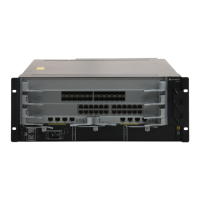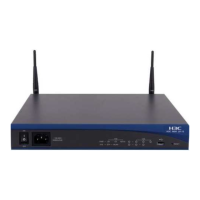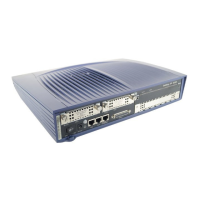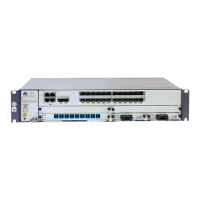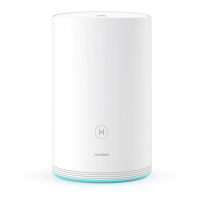Command Manual - QoS/ACL
Quidway S6500 Series Ethernet Switches Chapter 2 Qos Command
Huawei Technologies Proprietary
2-33
Description
Using the traffic-priority command, you can activate ACL and perform priority marking.
Using the undo traffic-priority command, you can remove the priority marks.
The system can mark the packets with various levels of precedence (dscp precedence
and IP precedence).
Only the rule with the action of permit can be activated by this command successfully.
For the related configuration, see display qos-interface traffic-priority.
Example
# Perform priority marking to packets that match with the permit rule of ACL 2000. Set
its local priority to 0.
[Quidway-qoss-Ethernet3/0/1] traffic-priority outbound ip-group 2000 local-precedence
0
2.1.25 traffic-red
Syntax
traffic-red outbound { ip-group { acl-number | acl-name } [ rule rule ] | link-group
{ acl-number | acl-name } [ rule rule ] } qstart qstop probability
undo traffic-red outbound { ip-group { acl-number | acl-name } [ rule rule ] |
link-group { acl-number | acl-name } [ rule rule ] }
View
QoS view
Parameter
outbound: Performs RED operation to the sent packets.
ip-group { acl-number | acl-name } [ rule rule ]: the basic or advanced ACLs;
acl-number: the sequence number of ACLs, ranging from 2000~3999; acl-number: the
name of ACLs, character string, which must be started with an English letter (i.e., a-z or
A-Z), and there should not be a space or quotation mark in it; rule rule: (Optional)
specifies a subitem of an ACL, ranging from 0 to 127, it represents all the subitems of
the ACL if not specified.
link-group { acl-number | acl-name } [ rule rule ] : The Layer 2 ACL; acl-number: the
sequence number of an ACL, ranging from 4000~4999; acl-name: the name of an ACL,
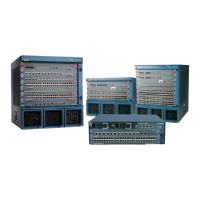
